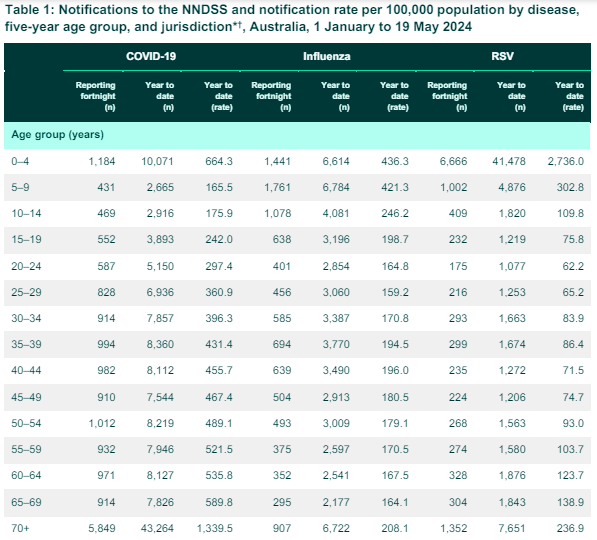Winter brings a stark rise in respiratory infections
- Written by The Times

The weather gods have well and truly received the memo that winter is nigh and with it comes an ever-increasing level of respiratory infections.
According to the latest Australian Respiratory Surveillance Report for 6 to 19 May (published 24 May 2024), since late April 2024, the number of nationally notified COVID-19, influenza, and respiratory syncytial virus (RSV) cases have been steadily increasing.
Nationally, there were 17,538 COVID-19 notifications with a diagnosis date this fortnight (6-19 May), as compared to 11,656 notifications for the previous fortnight, with the highest notification rates in New South Wales and Queensland.
For influenza, the reported notifications have risen nationally from 6,557 to 10,619 cases over the past four weeks, with the Northern Territory recording the highest number of cases, though cases have also increased in the Australian Capital Territory, New South Wales, South Australia, Tasmania, and Victoria.
RSV national notifications have also risen from 11,015 to 12,277 in the past four weeks, with 72,061 notifications reported in the year to date – almost twice the number of cases for the same period in 2023.
COVID-19 has claimed the highest number of lives in the year to date with 755 deaths, followed by 58 deaths attributed to influenza, and 23 RSV-associated deaths.
“These alarming figures are all the more evidence of why we should all do what we can to help reduce the spread of respiratory pathogens,” says Daniel Seldon from Aussie Pharma Direct.
“The tried-and-true measures of staying home when unwell, wearing a face mask, especially in enclosed spaces like public transport, staying up to date with the recommended vaccinations, washing your hands and using hand sanitiser remain our best forms of defence.
“It’s easy to get complacent, but the figures don’t lie, and we are now facing the headwinds of respiratory infections on the rise. Remaining on the front foot and being prepared with necessary items at the ready, like rapid antigen tests (RATs), will help to keep you and your family safe and healthy.
“We’ve even seen sporting teams like Manly United Football Club take the initiative by stocking up on new combo RATs to allow all their players to test at the first sign of symptoms of not just COVID-19, but also influenza A and B so they can isolate at home rather than coming to practise and potentially infecting the rest of their teammates.
“And we are proud to support the only Australian made rapid antigen test – HA Tech that tests for RSV, COVID-19, influenza A and B in the one test. All the other tests on the market are from overseas, so it’s great to have this important homegrown technology available to all Australians,” concludes Seldon.


















